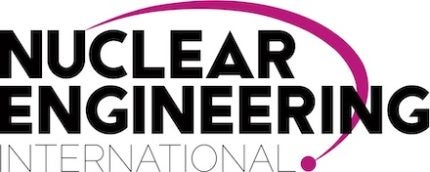
Impressive recent growth in the SMR project pipeline is just one more element of a tidal wave forming for the next great nuclear breakthrough.
In the first quarter of 2024 the small nuclear reactor (SMR) project pipeline reached 22 GW. This, according to a new report from analytics firm Wood Mackenzie, represents growth of some 65% in the three years since 2021.
Noting that just five countries lead the project pipeline – Canada, the Korean Republic, Poland, the United Kingdom, and the United States are driving some 58% of those projects – the WoodMac analysis adds that even the current global project pipeline would require an investment of close to US$176bn.
It’s clearly a substantial growth rate and is backed by serious investment, even if the whole extent of the current pipeline never reaches a positive final investment decision. And it’s a district possibility, if not outright probability, that such a situation may come to pass as some of these projects fall by the wayside. After all, there are obvious risks to consider, particularly in light of the high profile NuScale retrenchment. As an industry leader – and still the only SMR design to receive approval from the US Nuclear Regulatory Commission – NuScale had been widely seen as something of a flag-bearer for this burgeoning new nuclear industry.
It’s understandable then that the decision to abandon the Carbon Free Power Project (CFPP) being developed in partnership with Utah Associated Municipal Power Systems (UAMPS) was taken by many as a significant blow to the credibility of SMRs as a whole.
However, to reach that conclusion would undoubtedly be an ill-considered approach. NuScale may have taken a step backwards, but it is hardly in full-blown retreat. Almost immediately after the CFPP decision was announced Standard Power revealed plans to work with NuScale to develop two SMR-powered facilities in Ohio and Pennsylvania. The Standard business is as a provider of services to data companies and this may be taken as a giant neon sign pointing to at least one of the underlying drivers behind a global SMR boom. The unabated growth of energy-hungry data centres is likely to see an early and productive partnership between the two industries. They certainly won’t be alone though, given Microsoft founder Bill Gates is also the founder of Terrapower with its 345 MWe Natrium sodium-cooled fast reactor technology.
There’s other clear evidence of gathering momentum behind an SMR-led nuclear market too. With multiple policy initiatives reflecting a new appraisal of nuclear in general, there are also SMR-specific government-backed measures designed to push SMR technologies off the drawing board and into operation. Important regulatory efforts underway include the US NRC, the UK Office for Nuclear Regulation (ONR) and the Canadian Nuclear Safety Commission (CNSC) recently signing a trilateral deal to collaborate on SMR and advanced modular reactor (AMR) design assessment. The agreement is designed to enable both good practice and experience of reviewing SMR/AMR designs to be shared between the regulators. All three bodies are already engaged with SMR design assessment – the NRC is conducting pre-application activities with Westinghouse regarding design certification for its AP300 SMR, as well as with Holtec International for its SMR 300, and GE-Hitachi Nuclear for licensing approval of its BWRX-300 design, for example. This new measure marks an important step toward a unified regulatory framework that is so important to the success of SMRs that are expected to be deployed in many different jurisdictions.
Given the underlying fundamentals it’s perhaps not so surprising that in their net zero scenario, WoodMac sees SMRs accounting for around a third of the global nuclear fleet. It’s not a cloudless horizon, inevitably there are both economic and technical risks and challenges that must be overcome and to do so will require a long-term concerted effort from government, regulators and the private sector. But taken in the round there is every indication that the 65% growth in the project pipeline seen over the last three years will come to be regarded as a pretty poor show in the years that follow.




